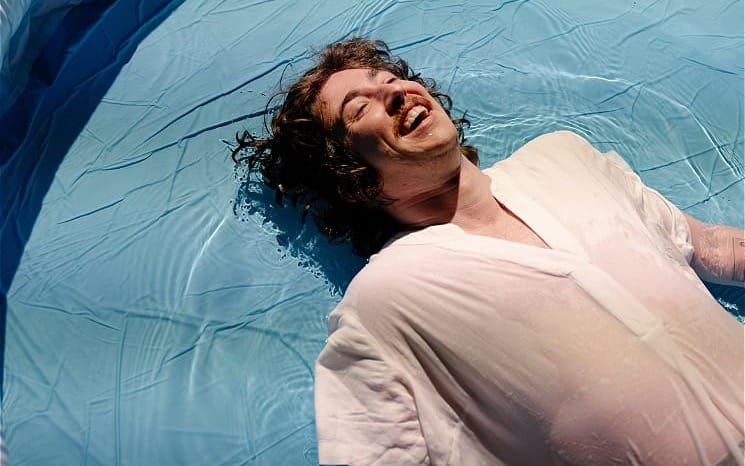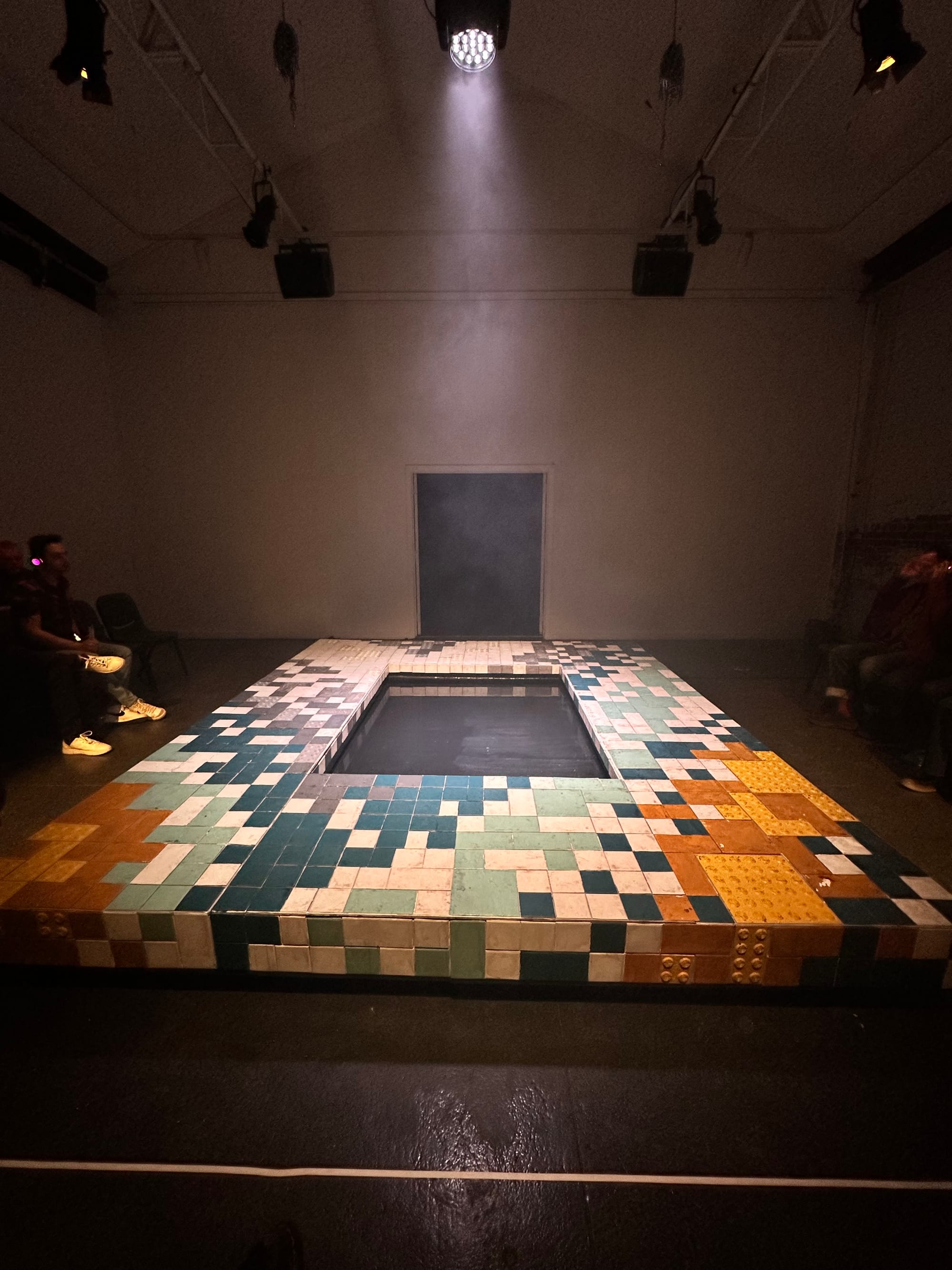”Criticism”
An angry review of a bad review of one of my favourite shows at Melbourne Fringe

I am so grumpy reading this review of No Seasons by Oliver Ayres, which was written by Jason Whyte for Australian Arts Review.
I initially wanted to send a big very grumpy email to AAR’s editor about it, but I figured I may as well compile all my thoughts here.
I know that broadly individual reviews mean very little—reviews are just what one person thought of one performance at one specific moment in time. If they’re negative, that genuinely doesn’t mean much on the whole. But here, I specifically want to stand up for this show, both because it’s a show that was genuinely great and deserves praise—but also because this review is not just negative (which is fine), but poorly written.
When we practice criticism we should do so with care and generosity and curiosity, things that I don’t see in this review which I specifically wanted to call out.
What follows is a paragraph by paragraph response to Jason’s review. It’s a little c*nty but hey, we should hold criticism to as high a standard as the art which it critiques.
Some years ago, as part of a “journey towards gender transition”, the 19-year-old now known as Oliver Ayres had 22 of their eggs retrieved and stored. In recent times, they have concerns about what might happen if any were donated.
I mean where do we even start here? Why the use of they/them pronouns for a man who uses he/him pronouns? This is a brilliant (and far too common) way of invalidating someone’s gender identity which you would think, as a critic tasked with getting a show you might try to avoid doing.
Then there’s the way that Jason refers to Ayres as someone “now known as” Oliver. Are we trying to emulate JK Rowling’s Twitter feed? In this context—where none of your readers would be familiar with Ayres’ dead name—it’s a meaningless turn of phrase which further demonstrates an inability to write about trans people.
And FWIW, it’s ridiculous that the writing seemingly doesn’t grasp that Ayres is no longer 19. He was 19 when his eggs were frozen and is very much a fully grown adult man now—how are you missing this context?
Would a child go looking for a biological mother, and be unsettled by finding a father? Despite that thought from the fringe blurb, the show No Seasons has broader reasons for anxiety about any offspring.
The blurb states:
If I choose not to use my eggs to have my own children, can I live with myself if I donate them to other families, knowing that one day they may search for their biological mother - and find their father instead.
Nowhere in that text is the word ‘unsettled,’ so props to Jason for showing himself to be someone who finds gender transition something to be unsettled by.
A potentially important one is chronic illness, which could possibly be passed down. Ruminations on this, and other topics relating to children, featured in headphones we collected on the way into the venue.
The way Jason uses qualifiers like ‘potentially’ is fascinating here. The show is ‘potentially’ about chronic illness in the same way that Australian Arts Review ‘potentially’ publishes poorly thought through & edited criticism (read: it certainly has today).
With no requirement for accuracy, attendees can choose a category (parent, not yet a parent but might be someday, not a parent and not expecting to be), receive an appropriately coded headset, and hear an audio track associated with their choice.
I’m not sure why accuracy is important when letting audience members choose which version of the show they might like to experience—ultimately the work isn’t about who chooses what audio track, but about the relationship to parenthood you‘re bringing to the work. In this paragraph I get a sense that Jason is thinking about parenthood in exactly the sort of top down way that Ayres’ work pushes back against.
The show’s season was marketed as having “audio description”, but effectively, headphones gave everyone a pre-recorded audio track. My choice allowed me to hear from Ayres, their mother, and other voices having roles we might have to guess at.
I’m unsure if Jason has ever experienced a show with “audio description” (why is this in quotation marks?) but, if he has, I’m confused by his confusion by the use of headphones. Headphones are a common method of providing audio description. Less common is the use of a pre-recorded audio track, but given the way Ayres’ work is constructed, it makes total sense.
However, this audio does not describe other happenings, including Ayres’ wordless live actions before us. Mostly these are around a rectangular tiled area, having a volume of water in the middle. In short, people with low vision were not given the accommodation that was promised.
I’m unsure if Jason is up to date on best practices for making art accessible, but here’s the summary; audio description doesn’t have to use to the medicalised and othering methods that have been used in the past, like headphones and third party describers who aren’t embedded in the work.
There are ways of doing audio description that read as poetic and lyrical to sighted audiences, while being explicit descriptions of what’s going on—‘I am here’ can be construed as a description or a metaphor. In conversation with Ayres he’s made it clear to me that a lot of the clues for how to unpick the accessibility of the work are delivered pre-show in the optional tactile tour, where folks with low vision are given exactly the sort of accomodations that Jason suggests weren’t included.
Perhaps in an unfortunate coincidence, the tiled area (including a smattering of rainbow colours, a reference to the Pride Flag?) appeared to have tactile surfaces, in miniature, of the type that indicates a hazard for people with a vision impairment.
Ah yes, the pride flag which, as we all know, is famous for being orange, mustard, white, turquoise, navy, and white. Oh, and grey! How could anyone forget the grey part of the pride flag? (It’s my favourite stripe.)

Obviously if an artist is queer and they use any colour in their work, it’s an allusion to the pride flag. Because it’s imperative that the audience know they’re queer, so that in case any of those afflicted with heterosexuality forget they’re watching a queer show there’s at least a reminder: “THIS IS A QUEER SHOW ABOUT QUEERS AND IT HAS NO BEARING ON YOU”
But they are scattered here, lessening their usefulness. There’s a perplexing thought that there might have been an intention to explore matters of disability or access in the show, but it hasn’t solidified.
The show does explore disability and access. It’s truly astonishing how this review manages to miss the show’s central theses. This sentence is like saying ‘Come From Away had an intention to explore the way people come together after tragedy, but it hasn’t solidified.’
And for what it’s worth, if you don’t attend the pre-show tactile tour, I don’t think you can say that the tactile elements of the set aren’t used.
Given how we talk about a “dead name” when people transition, perhaps the water in the middle references the rebirth symbolised by baptism. Or is it about fully committing to a decision?
Those are some mighty “transphobic” quotation marks. I don’t even know where to start with this paragraph, it’s just so poorly written—like what does the second sentence even mean? What decision? What commitment? Did we watch the same show? Why does art by trans people have to be about transition instead of… literally anything else?
I think criticism is at its worst when it’s some faceless person musing to themself about what things ‘mean.’ Who the f*ck cares what the water symbolises when it made me feel things. I’m much more interested in the way that those feelings were nurtured and sustained than what symbols mean.
We might not understand the pebbles cast into the water, but later we might equate them with eggs. But is that long length of white fabric standing in for a shroud, or a hospital gown? Sometimes it could feel that some object produced was a contrivance to get us to the next scene.
You might not understand Jason, and that’s ok. You probably weren’t the right reviewer for this work. But it would’ve been great to let Australian Arts Review know before you accepted a complimentary ticket to see the show.
Also, as an aside, are artists not allowed to use design elements to evoke multiple images at once? I must’ve forgotten that symbols in art must only ever mean one immutable thing. After all, meaning is fixed and rigid and entirely constructed by the artist.
The audio track could have times of repetitious consideration of whether or not using any of those stored eggs to have a child was a good idea. However, unlike how repetition worked with the slow revealing of clues in Sh!t Theatre’s show this Fringe, we can feel that we’re working hard to decode the symbols, without achieving much insight.
I’ll forgive the clunky and disjointed writing here—but what I won’t forgive is this unhinged comparison of shows.
Having seen both No Seasons and Sh!t Theatre this fringe, I can quite comfortably say they’re just completely different shows. Different styles of performance, different genres, different themes. One show asks audiences to share booze and sing folk songs to get through the grief while the other encourages you to sit with headphones and reflect on the inheritance we want to give to those who come after us.
I wonder if this comparison is being made just because these two shows are from queer artists? If so, why didn’t Jason call out Sh!t Theatre for not having a rainbow flag (with grey stripe) in their set? How else would we have known???
Look, I am just grumpy. It’s shockingly poor writing that Australian Arts Review really shouldn’t have published, or at least, should have heavily edited.
I would put a big paragraph here about why criticism is important and why these inane blogs do such a disservice to the indie theatre sector, but I can’t be f*cked. You get it. Rigour is as important in criticism as it is in the making of art which receives it.
So, to those excellent artists making excellent work: don’t invite Australian Arts Review to review your art—see above for the calibre of writing they publish.
Instead, I think artists should be writing about their own and each other's art. There’s something to be said for writing coming from those who are ‘amongst it’ which lets you get what another artist is doing better than folks who write about art in this intellectually incurious and rudimentary way.
Anywho, you should see No Seasons before it closes this week. One of the best things I’ve seen this year. Please go and tell me what you think!
FWIW: I was also invited to review No Seasons, although I haven’t yet written a full review of the show.

